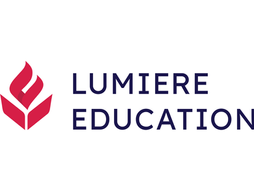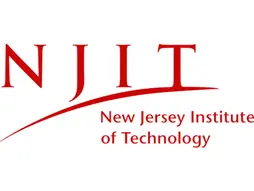8 Projects for Middle School Students That Are Worth Checking Out
If you are a middle school student who wants to build your interest in a subject, or even just spend your free time putting work into something awesome, then opting for a project related to school subjects could be a great way to use your time! Personal projects in STEM and non-STEM disciplines allow you to explore your interests, give you hands-on experience, put theoretical knowledge from the classroom into practice, and deepen your understanding of a subject. They even build important problem-solving and analytical skills!
To help get you started, we have compiled a list of some of the best projects for middle school students covering STEM, history, film, and other disciplines to inspire and help you explore your interests!
1. Build an electric motor
What to do: Motors are not just limited to vehicles. They are some of the most basic systems in most appliances in your home, like washing machines, fans, and refrigerators. In this project, you will build a basic electric motor and learn about electromagnetism and how electrical energy is converted into mechanical energy.
The first step is to gather equipment. Magnets, copper wire, sandpaper, batteries, and paper clips. To build the circuit, coil the wire to create an electromagnet and use paper clips to connect the battery to the coiled wire and complete the circuit. You can find a more detailed step-by-step process here.
Skill sets: A basic understanding of electricity and circuits.
Ideal for: All middle school students interested in STEM, especially engineering and physics.
Drawbacks: You will work with materials that can be hazardous. Complete this project under adult supervision or with an older, more experienced student.
Tips: Processes like coiling the wire and connecting the circuit can be quite technical. We recommend having extra material available if you make a mistake and need to start over.
2. Build an automatic pill dispenser
What to do: Design and build a pill dispenser that gives you the correct medication at the correct time! To start the project, you should take a deeper look at software like Arduino, a prototyping platform that lets you create interactive electronic objects.
Materials required include a programmable motor to dispense pills, an LCD to display the date, time, and message, and LED lights and a buzzer to set a reminder alarm. For more information on this project and how to go about it, follow this step-by-step guide.
Skill sets: Prior knowledge of a prototyping platform like Arduino and familiarity with designing and building circuits. You need to be technical, follow instructions well, and be good with hands-on tasks.
Drawbacks: This project is more advanced and requires both prior knowledge and materials like a motor, clock, LED lights, and LCD, which can be expensive.
Ideal for: Middle school students who want to do more advanced projects.
Tips: Examine commercially available pill dispensers available in stores for inspiration — it can help you decide what innovation your project needs!
3. Make a documentary film
What to do: Find a real-life topic worth investigating. Do your own research, interview people, film, and edit the final product. Your documentary film should investigate an issue you are passionate about and aim to thoroughly provide several perspectives. You can cover local environmental issues, spotlight community workers, and even document the traditional practices of a community.
Skill Sets: Prior knowledge of handling a camera and using film editing software is helpful but not necessary. You will learn how to shoot, edit, and record sound during this project.
Ideal for: Students interested in film and documenting stories.
Drawbacks: It can be hard to find good equipment for this project. You will likely need guidance if dealing with sensitive subject matter.
Tips: Pick a relevant subject that the general public would be interested in learning about. Storyboard and plan your documentary. Practice filming techniques and the use of sound, light, etc. before beginning the project.
4. Build and test paper planes
What to do: Build paper planes with different designs and materials to see how their flight is affected. Learn how different forces like drag, lift, and thrust affect a plane’s ability to fly. When designing and testing, pay special attention to the kind of paper, wing size, and fuselage length. You can find paper plane designs to get you started here. Try recording data like flight distance, air time, and a stability rating for each iteration. Once you have perfected your design, challenge your friends and classmates to a paper plane competition!
Skill sets: You need good precision and attention to detail when folding paper. Strong organization skills will help you record test flights and use this data to improve future models. During the experiment, you will develop problem-solving and analytical skills when investigating what makes one plane better than another.
Drawbacks: The experiment is not eco-friendly. We recommend using recycled paper to reduce waste.
Ideal for: All middle school students. The project is fun and is an enjoyable way to learn about basic physics concepts.
Tips: You can use YouTube tutorials and other online resources to fold better paper planes.
5. Design a working flashlight
What to do: Explore how electricity and circuits work by building a flashlight, which is but a simple series circuit! You will learn how to assemble a series circuit and understand how an electric charge flows through a circuit. Materials required include at least two batteries, copper wire, a bulb holder, a paper/cardboard tube, tape, scissors, and other art supplies.
Skill sets: This project is quite basic. Prior knowledge of kinds of circuits and concepts like voltage, charge, current, parts of a circuit, etc. is helpful, though not necessary.
Drawbacks: This project could be too basic for students with prior knowledge and experience in designing circuits.
Ideal for: Middle school students who benefit from hands-on learning to introduce concepts.
Tips: You can make this activity more challenging for experienced students by making them design a circuit from memory.
6. Lead a fundraising campaign
What to do: Organize an activity (or activities) to raise money for a good cause. You can organize a recycling drive, sell raffle tickets, host a walk/run, and other activities that you are passionate about and involve your local community. Once you’ve decided on an activity and its purpose, we suggest you form a team that includes friends, family, and adults who can supervise. Set a target budget, gather the supplies you need (for example, if holding a bake sale, you need to buy ingredients, paper, packaging boxes, and other items), and publicize your event to raise awareness.
Skill sets: Good organizational skills are helpful, though we recommend getting help from adults and people with experience to ensure your event is a success.
Ideal for: Anyone interested in supporting a good cause and giving back to the local community.
Drawbacks: Your event will need to be well-coordinated to avoid operational challenges on the day of the event. This can be difficult to achieve, especially if it is your first time planning such an activity.
Tips: Plan as much as possible in the days and weeks leading up to the event to minimize the chances of something going wrong. and to have robust contingency measures in place. Ask your parents, teachers, and other adults for help if you face any setbacks. Also, choose a cause worth getting behind, This can include a fundraiser to support someone’s medical bills, underprivileged children, funding for a community center, etc.
7. Start your own business
What to do: Have a small business idea to sell a product or service? Middle school can be a great time to test the waters and see if you’ve got a knack for entrepreneurship. Engaging in a small business at a young age can encourage innovation and problem-solving skills, and motivate you to challenge yourself further. Even something as simple as mowing lawns, offering dog-walking services, and providing tech support to the elderly, can already be a great way to gain some experience while making some money on the side.
Skill sets: You do not need any prior skills. This exercise will teach you entrepreneurship and innovation, improve your problem-solving skills, financial literacy, and communication skills, as well as give you important experience in leading a team.
Ideal for: All middle school students.
Drawbacks: You may need capital to get your idea off the ground. Starting a business can be time-consuming and require significant effort outside school.
Tips: Draw up a business plan before you begin that outlines your market, budget, and goals. Start small and scale up once you have proof of concept.
8. Build a wind turbine
What to do: The wind turbine experiment is a great way to learn about clean energy sources. Here, you will build your own turbine to understand how wind spins the blades of the fan, moving the internal turbine to generate electricity. You can study how efficient your turbine is by attaching a small weight that is hauled up when the wind blows on the blades to measure the work done, while also learning about how different materials and blade shapes, sizes, and angles impact efficiency.
Skill sets: You will develop critical thinking and problem-solving skills when deciding on materials and blades needed to build an efficient turbine.
Drawbacks: A well-functioning turbine can be weather-dependent. Materials available can limit the kind of turbine you build.
Ideal for: Middle school students interested in engineering and generating clean energy.
Tips: Use a turbine kit with the necessary materials to build a turbine. Online tutorials and resources can help you refine your model.
Bonus — the Lumiere Research Scholar Program!
If you’d like to participate in a rigorous research program open to high schoolers, you may want to consider the Lumiere Research Scholar Program, a selective online high school program for students founded by researchers at Harvard and Oxford. Last year, we had over 4000 students apply for 500 spots in the program! You can find the application form here.
Also check out the Lumiere Research Inclusion Foundation, a non-profit research program for talented, low-income students. Last year, we had 150 students on full need-based financial aid!
Kieran Lobo is a freelance writer from India.













